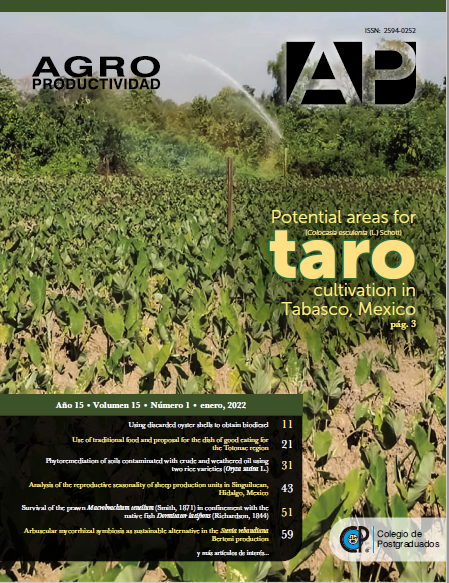Physiological response of three wild castor bean (Ricinus communis L.) ecotypes exposed to different substrate moisture levels
##plugins.themes.bootstrap3.article.main##
Keywords
Intracellular carbon dioxide, Leaf vapor pressure deficit, Morphometry, Photosynthetic rate, Stomatal conductance.
Resumen
Objective: To analyze the morphological and physiological responses of three wild castor bean (Ricinus communis L.) ecotypes to four different gravimetric moisture levels.
Design/methodology/approach: The wild castor bean ecotype seeds were collected in the arid region of the State of Durango, Mexico. Three potential ecotypes were selected according to seed size and shape. A completely random greenhouse culture was established with three wild castor bean ecotypes; they were planted in substrate with four gravimetric moisture levels (T1 Ɵ = 24±2%; T2 Ɵ =20±2%; T3 Ɵ =16±2%; T4 Ɵ = 14±2%). The physiological measurements were carried out with LICOR’s LI-6400XT portable photosynthesis system. A two-way ANOVA was
conducted to obtain differences between the factors and their interactions.
Results: Ecotypes 1 and 2 had larger stalks and leaves than ecotype 3. The differences in plant growth due to the effects of a 24% and 20% gravimetric moisture content were not significant (p = 0.05). Ecotype 3 presented the highest photosynthetic rate (14.77±6.14 μmol CO 2 m -2 s -1 ); however, the differences between ecotypes were not significant. The differences were determined based mainly on
substrate moisture.
Study limitations/implications: Determining the water requirements of castor bean crops allows for the optimization of water use in regions where this resource is scarce.
Findings/conclusions: Ecotype 1 seeds —which were very large, very round, and had low eccentricity— are associated with plants that have larger and wider stalks and leaves. This genotype could be domesticated considering a substrate moisture content of 24% and 20%.

